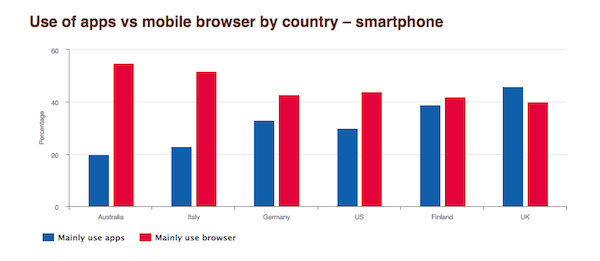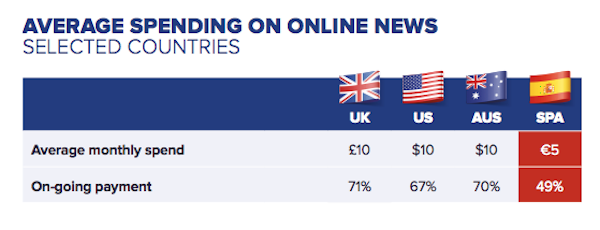
Further evidence for why publishers are willing to roll the dice and host their work on Facebook? The new report on the world digital news from Oxford’s Reuters Institute for the Study of Journalism found that 41 percent of respondents, representing 12 countries including the U.S., use Facebook to read and share news during any given week. And traffic from Facebook to publishers has also increased: The report found a 42 percent growth in Facebook shares of news content in January 2015 from a year earlier.
Another trend media companies are (or at least should be) familiar with? The continued rise of mobile. The number of people using smartphones to access news has jumped to 46 percent from 37 percent last year, according to the report.The annual study from the Reuters Institute weighs in at over 100 pages, digging into how people discover and read the news, the growth of new platforms, how people pay (or don’t) for news, and a country-by-country breakdowns of the top brands, social networks, and devices. You can read the whole thing here, or check out the top findings in 100 seconds:
Here’s a few things that I thought were interesting in this year’s report.
As smartphone usage surges upward, users may be getting news on their devices, but they may not be seeking out apps from news providers. The report found that 70 percent of smartphone users have a news app on their phone or tablet, but just one in three actually use it during a typical week.
The Reuters Institute also found that many readers prefer to use their browser over dedicated news apps:

In the U.S., 40 percent of those surveyed preferred search, compared to 36 percent who go directly to a site, and 35 percent who use social media.
The report found that email and social served different needs for different audiences:
The report’s findings are similar to those of the Pew Research Center on how people use Twitter and Facebook to discover news. While Facebook remains the most important social network for news, 57 percent of respondents said they mostly see news there while doing other activities. Conversely, 62 percent of respondents said they see Twitter as a useful way of getting news.In looking at email and social media in four countries (US, UK, Ireland, and France) we find that, on average, email is used more by older groups, whereas social media are more heavily used by the young. Email tends to be accessed as part of a daily habit, often at the start of the day, whereas social media are used throughout the day, with more of a peak in the late evening. Social media are used more for breaking news, entertainment, sport, and technology, while email is — relatively — more popular for business and politics.
And now for the not good news: “Meanwhile, in our survey, we see no discernible trend towards an increase in paid online content — or in willingness to pay.” The report found in most countries the number of people paying for online news is close to 10 percent, rising as high as 14 percent in Finland and sinking as low as 6 percent in the U.K.
The numbers aren’t favorable for any publisher considering a digital subscription strategy: In the U.S., 68 percent of respondents said they would never pay for online news, no matter what the price. In Spain, 59 percent said they wouldn’t pay at any price; the number jumps to 75 percent in the U.K.

As media companies try to develop new business models to sustain their work, the audience is also becoming aware of the changes. According to the report, 35 percent of respondents said they frequently or often see sponsored content. But just because they’ve seen it, that doesn’t mean they’re sure what sponsored content is:
Readers may not entirely know what it is, and they may not like it: In the U.S., 43 percent of respondents said they have felt disappointed or deceived after reading an article and realizing it was sponsored, the report said. In the U.K., 33 percent of readers said they also felt disappointed or deceived.For example, one member of our focus group in the US confidently and spontaneously talked about seeing more native advertising. However, once we delved further into it, we found they were actually describing retargeted advertising, based on their browsing history.
Maybe it shouldn’t be a surprise that readers are increasingly using adblocking software: The report found that 47 percent of respondents in the U.S. and 39 percent in the U.K said they regularly use adblockers.